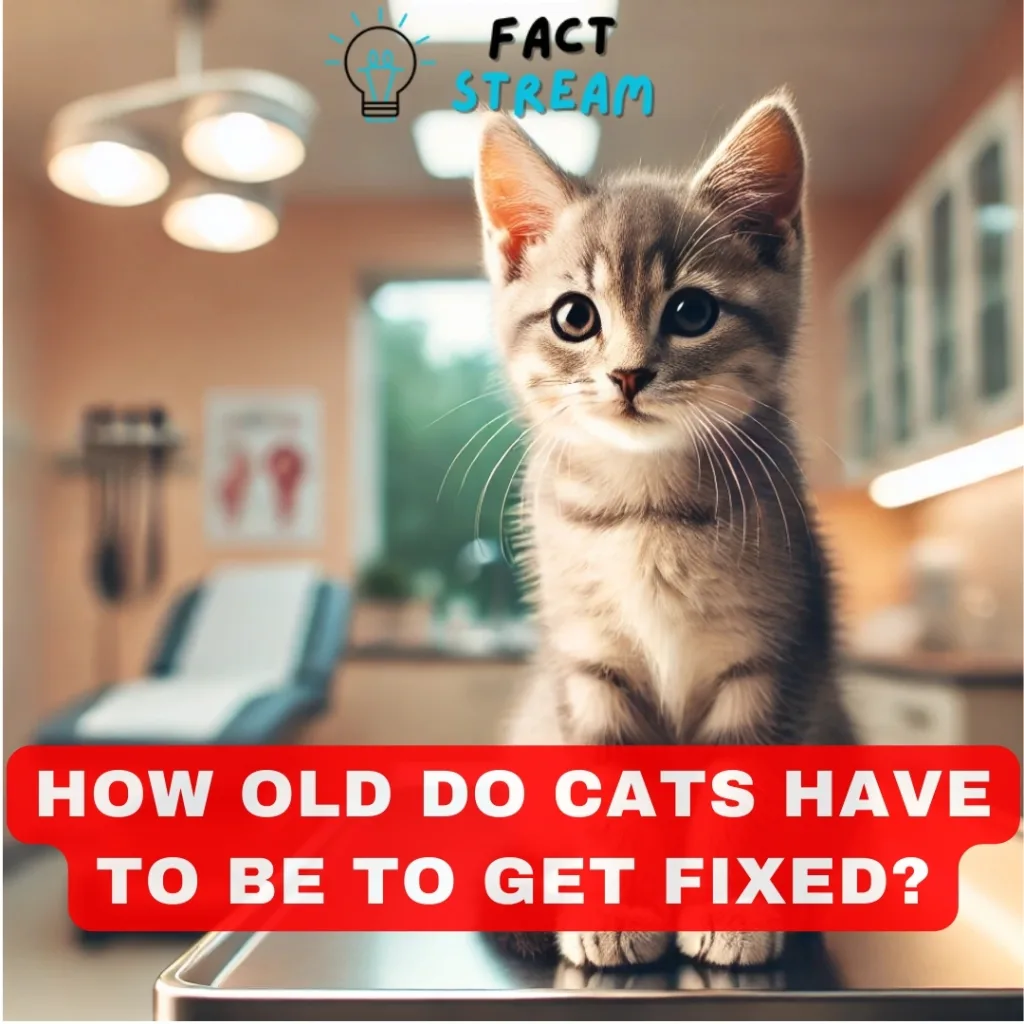How Old Do Cats Have to Be to Get Fixed?
So you’ve got a new kitten – that’s awesome! You’re probably already smitten with their playful antics and adorable meows. But as a responsible pet owner, you’ll want to think about spaying or neutering, also known as “getting fixed”. But when is the right time? Let’s break it down.
The Recommended Age: It’s Younger Than You Might Think!
You might have heard that cats should be fixed at six months old. While that was the standard advice for a long time, vets now often recommend doing it between four and five months old. That’s because cats can actually start reproducing much earlier than most people realize – sometimes as young as four months old!. Spaying or neutering before they reach sexual maturity can help prevent accidental litters.
Why Early Spaying and Neutering Is Becoming More Common
Spaying or neutering kittens at an even earlier age – between six and eight weeks – is becoming more common, especially in shelters. This is often called “pediatric” spaying or neutering. The goal is to prevent unwanted pregnancies and control the population of homeless cats.
Think about it: one female cat and her offspring can produce a staggering 420,000 kittens in just seven years!. Spaying and neutering helps reduce the number of unwanted cats that end up in shelters or on the streets.
Can You Spay or Neuter an Older Cat?
The good news is, it’s almost never too late to get your cat fixed. Cats can be safely spayed or neutered even in their teens, as long as they’re healthy. Your vet will likely do a check-up and possibly some blood work to make sure everything’s okay before the procedure.
Why Fixing Your Cat Is a Great Idea
Spaying or neutering isn’t just about preventing kittens; it also comes with a bunch of health and behavioral benefits for your feline pal:
For Female Cats:
- Reduces cancer risk: Spaying before the first heat cycle drastically lowers the risk of mammary cancer, a very aggressive type of cancer in cats. It also eliminates the risk of ovarian and uterine cancers.
- Prevents infections: Spaying eliminates the possibility of uterine infections, such as pyometra.
- Reduces unwanted behaviors: Say goodbye to those loud yowls and frantic attempts to escape during heat cycles! Spaying helps reduce or eliminate behaviors like yowling, spraying, rubbing on objects, and excessive affection.
For Male Cats:
- Reduces cancer risk: Neutering gets rid of the risk of testicular cancer.
- Reduces aggression and roaming: Neutered males are less likely to fight with other cats, reducing the risk of injuries from bites and scratches. They’re also less likely to roam, which means they’re less likely to get hit by cars or get lost.
- Reduces spraying: Neutering can help reduce or eliminate urine spraying to mark territory. No more smelly surprises!
Addressing Concerns About Weight Gain
One common concern about spaying or neutering is weight gain. It’s true that fixed cats might have a slightly slower metabolism, but that doesn’t mean they’re destined to become couch potatoes. By providing a balanced diet and plenty of opportunities for play and exercise, you can help your cat stay trim and fit.
The Final Word: Talk to Your Vet
Every cat is an individual, and the best time to get them fixed can vary. Your vet can consider your cat’s specific breed, health, and lifestyle to recommend the best timing for the procedure. They can also answer any questions and address any concerns you might have.
Spaying or neutering is a safe and simple procedure that can significantly improve your cat’s quality of life, prevent unwanted litters, and contribute to responsible pet ownership. So, chat with your vet and book that appointment – your cat will thank you!


